Disasters can strike at any time, leaving individuals and communities vulnerable to injuries and other health-related issues. That’s why disaster recovery planning is crucial, and first aid kits are an essential part of such plans. First aid kits help to provide immediate medical assistance to those in need, potentially saving lives in the process.
Every household and workplace should have a well-stocked first aid kit as a vital component of their disaster recovery plan. These kits can make a significant difference in minimising injuries and ensuring the safety of individuals during emergencies, such as natural disasters, terrorist attacks, or accidents.
Key Takeaways
- First aid kits are essential in disaster recovery planning and can help to provide immediate medical assistance during emergencies.
- Having a well-stocked first aid kit at home or in the workplace is crucial in minimising injuries and ensuring the safety of individuals.
The Importance of Disaster Preparedness with First Aid Kits
Disasters can strike at any time, and being prepared can make all the difference in minimizing the impact of such situations. A crucial element of disaster preparedness is having a well-stocked first aid kit ready to use at a moment’s notice. First aid kits are essential in providing immediate medical assistance that can save lives and prevent injuries from worsening.
Having a first aid kit on hand can also bring peace of mind, knowing that you are equipped to deal with any emergencies that may arise. By having a kit readily available, you can respond quickly and effectively, reducing the impact of the emergency.
First aid kits are not just critical for households but also in the workplace. Workplace safety regulations stipulate that employers must provide adequate first aid provisions, including first aid kits and trained first aiders.
It is essential to note that just having a first aid kit is not enough; maintaining and updating it regularly is equally important. Checking expiration dates, restocking supplies, and ensuring the kit is easily accessible is vital in ensuring it remains effective and reliable in emergencies.
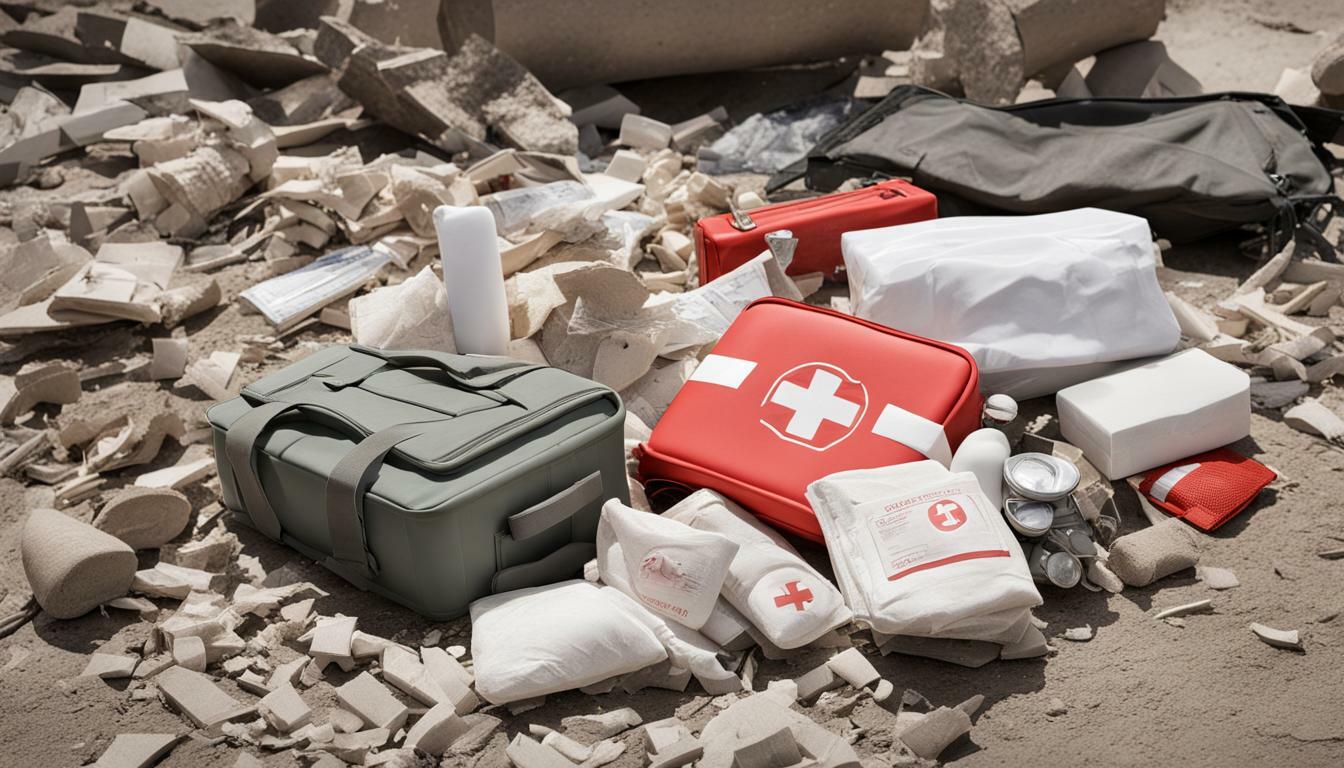
In summary, the importance of disaster preparedness with first aid kits cannot be overstated. By having a well-stocked first aid kit and knowing how to use it, you can be better prepared to deal with emergencies and potentially save lives.
Understanding the Essentials of a First Aid Kit
A first aid kit is an essential item to have in any household or workplace, particularly in preparation for disasters and emergencies. In order to be effective, a first aid kit must contain the necessary items to provide initial medical care and support until further assistance arrives. Below are the essential items that should be included in a first aid kit:
| Item | Purpose |
|---|---|
| Adhesive bandages | To cover and protect minor cuts and scrapes |
| Sterile dressings | To cover larger wounds and prevent infection |
| Gauze pads and rolls | To control bleeding and promote healing |
| Tweezers | To remove splinters or foreign objects from the skin |
| Antiseptic wipes or solution | To clean and disinfect wounds |
| Scissors | To cut tape, clothing or bandages |
| Disposable gloves | To prevent the spread of infection |
| CPR mask | To provide safe and hygienic mouth-to-mouth resuscitation |
| Pain-relief medication | To relieve discomfort or pain caused by injuries or illnesses |
| Emergency contact information | To quickly access important phone numbers and addresses in case of emergencies |
It is important to note that these are just the basic items that every first aid kit should contain. The specific contents of a first aid kit may vary depending on the intended use, the size of the kit, and the number of individuals it is meant to serve. Ensuring that the first aid kit is properly stocked and maintained is essential to its effectiveness in providing medical assistance when needed.
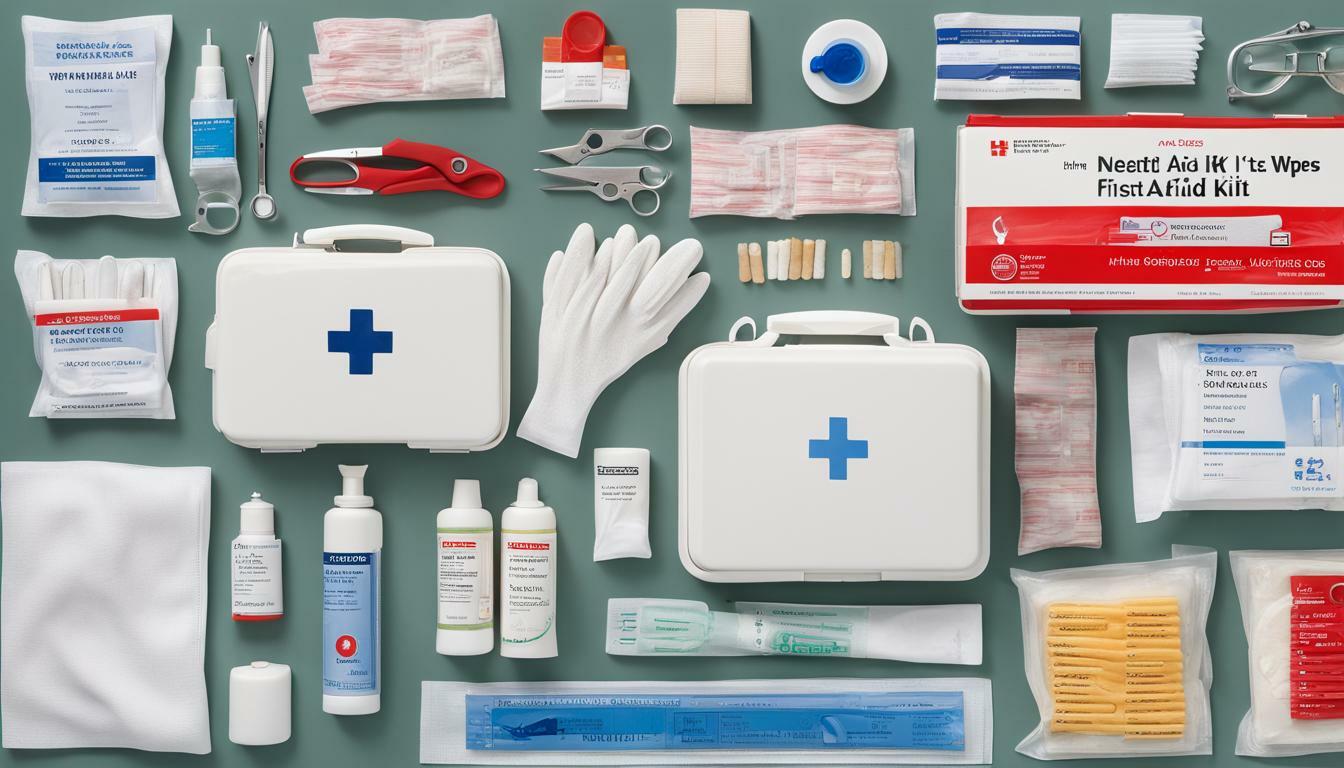
The Benefits of Having a First Aid Kit in Emergencies
In emergency situations, having a well-stocked first aid kit can make all the difference. The benefits of having a first aid kit within easy reach are numerous:
- Minimizes injuries: By providing immediate medical assistance, a first aid kit can help minimize the severity of injuries and prevent them from worsening.
- Provides immediate medical assistance: In emergency situations, time is of the essence. Having a first aid kit on site can provide immediate medical assistance until professional help arrives.
- Potentially saves lives: In critical situations, having access to a first aid kit can make the difference between life and death. A well-stocked kit can provide the tools needed to address serious medical issues until professional help arrives.
By having a first aid kit on hand, individuals and organizations can ensure their ability to respond to emergencies quickly and effectively. In addition to providing immediate medical assistance, a well-stocked first aid kit can also help to calm individuals who may be experiencing distress or panic as a result of the emergency.
Being prepared with a first aid kit allows for a more comprehensive approach to emergency response, which can help to increase the likelihood of a successful outcome. By planning ahead and having a well-stocked kit readily available, individuals and organizations can ensure they are best equipped to handle unexpected emergencies.
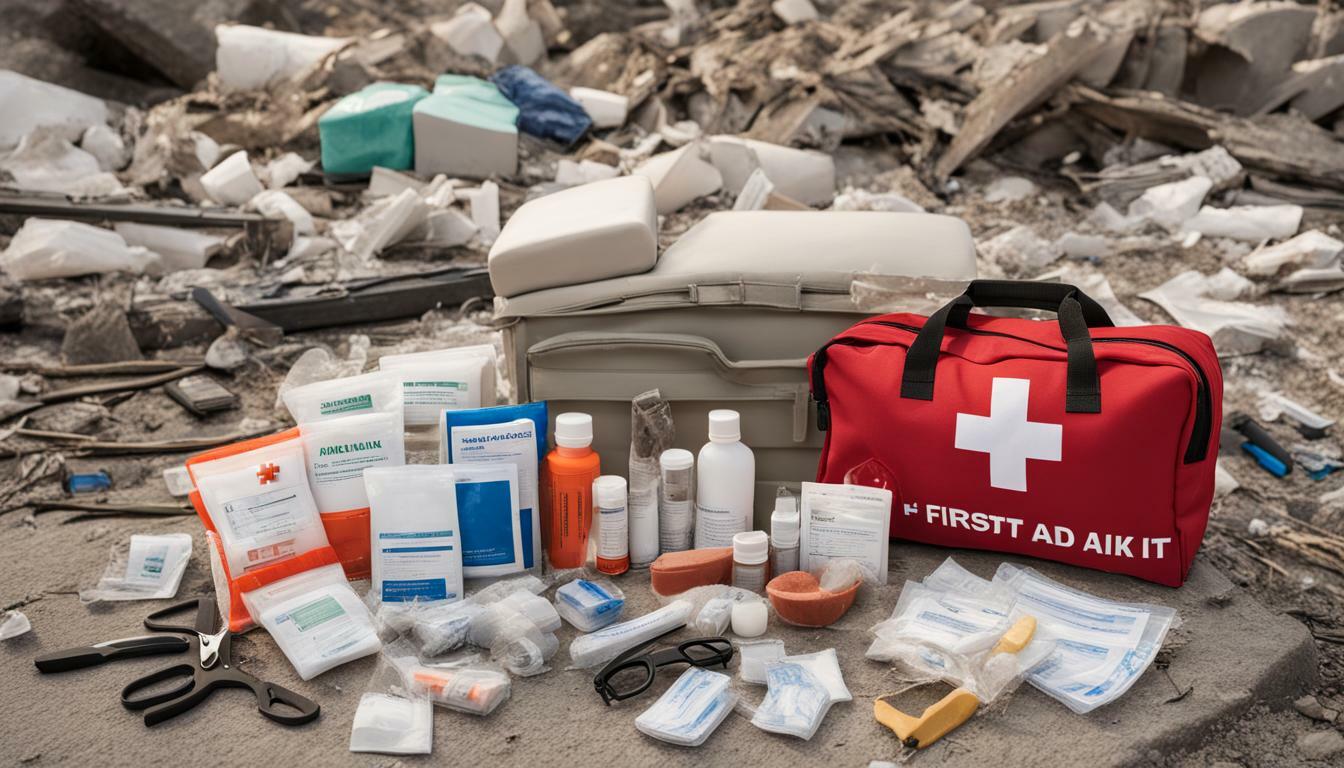
“In emergency situations, having a well-stocked first aid kit can make all the difference.”
How First Aid Kits Contribute to Disaster Recovery Planning
First aid kits play a critical role in ensuring the safety and well-being of individuals affected by disasters. They are a key component of disaster recovery planning, supporting the efforts of emergency responders and helping to minimize injuries and save lives.
During and after a disaster, first aid kits provide immediate medical assistance to those in need. They are often the first line of defense for individuals who are injured or require medical attention, particularly in cases where medical personnel are not immediately available.
First aid kits contain essential items that can help individuals deal with a variety of injuries and medical conditions. These include bandages, antiseptics, gloves, and emergency contact information, among others. By ensuring that these items are readily available, first aid kits help to reduce the risk of complications and promote faster recovery.
In addition to providing immediate medical assistance, first aid kits also contribute to overall disaster recovery planning. They help to ensure that individuals have access to the tools and resources that they need to remain safe and healthy in the aftermath of a disaster, even in the absence of medical personnel and other emergency responders.
Furthermore, first aid kits play an important role in supporting the efforts of emergency responders. By providing essential medical supplies and other resources, they help to reduce the strain on emergency services and enable responders to focus on more critical tasks.

Overall, first aid kits are an essential component of disaster recovery planning. They provide immediate medical assistance, support the efforts of emergency responders, and help to ensure the safety and well-being of individuals affected by disasters. By including first aid kits in disaster recovery plans and ensuring that they are properly maintained and accessible, individuals, households, and workplaces can take an important step towards being prepared for emergencies in the UK.
Understanding the Contents of a First Aid Kit
A well-stocked first aid kit is essential in any emergency situation. Knowing what items to include in your kit can make a big difference when it comes to administering first aid. Here are some of the essential items that should be included in every first aid kit:
| Item | Description |
|---|---|
| Adhesive bandages | These are used to cover small wounds and prevent infections. |
| Sterile dressings | Used to cover larger wounds and stop bleeding. |
| Antiseptic wipes | These are used to clean wounds and prevent infections. |
| Gloves | Used to protect yourself from contact with blood or other bodily fluids. |
| CPR mask | Used to protect yourself while administering CPR. |
| Medications | Such as pain relievers, antihistamines, and anti-diarrheal medication. |
Other items that may be useful to include in a first aid kit depending on the situation include scissors, tweezers, emergency contact information, a flashlight, and a first aid manual.
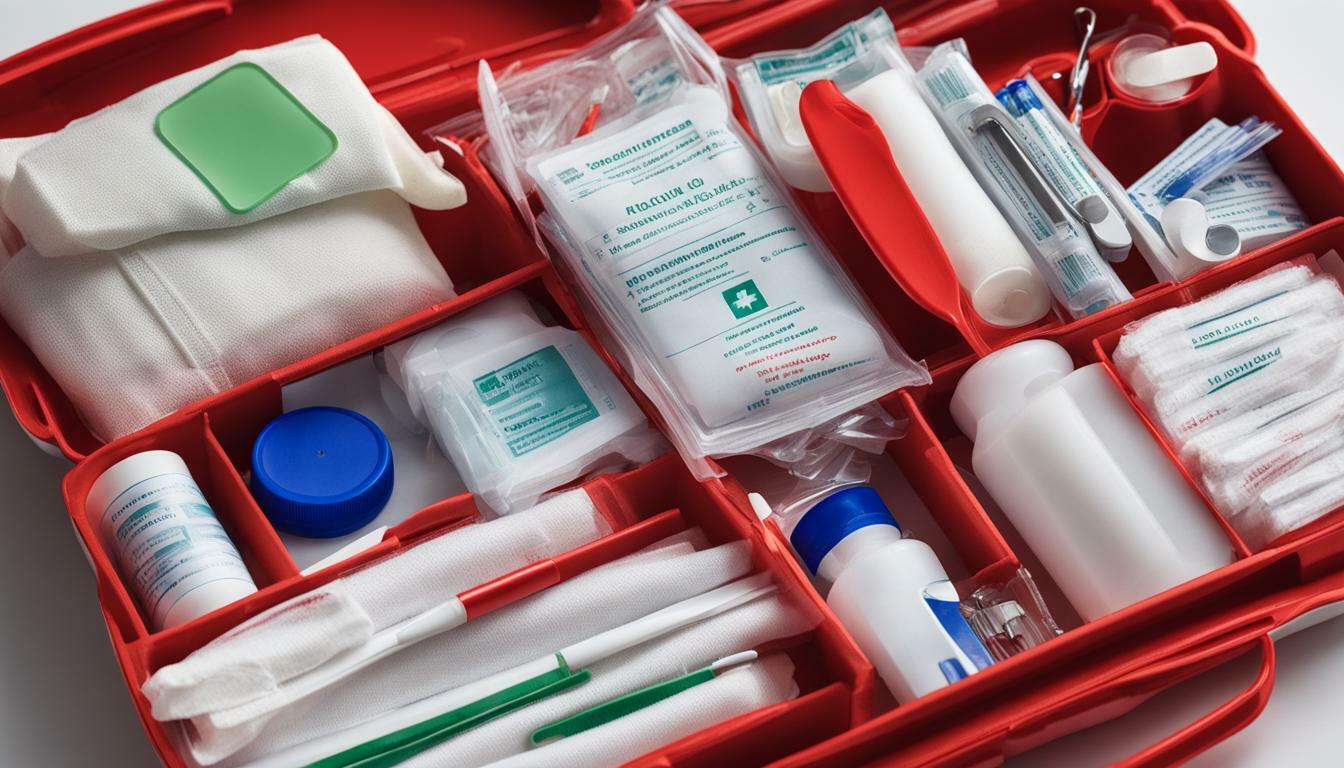
It’s important to note that items in a first aid kit should be checked regularly, and expired items should be replaced. Additionally, make sure that your kit is easily accessible in an emergency situation.
Guidelines for Maintaining and Updating First Aid Kits
Proper maintenance and regular updating of first aid kits are essential to ensure their effectiveness during emergencies. Here are some guidelines to help you maintain your first aid kits:
| Guideline | Explanation |
|---|---|
| Regularly check expiration dates | Expired items in the first aid kit may no longer be effective, so it’s important to check and replace them as needed. |
| Restock supplies as needed | As items are used or expire, it’s important to replace them to keep the first aid kit fully stocked and ready for an emergency. |
| Store the kit in an easily accessible location | The first aid kit should be stored in a location that is easy to reach in case of an emergency. Make sure that everyone in your household or workplace knows where the kit is located. |
| Ensure the kit is properly sealed | To prevent contamination, make sure that the first aid kit is properly sealed and protected from dust and moisture. |
Following these guidelines will ensure that your first aid kit is always prepared for emergencies, and can help you provide necessary first aid assistance to those in need.
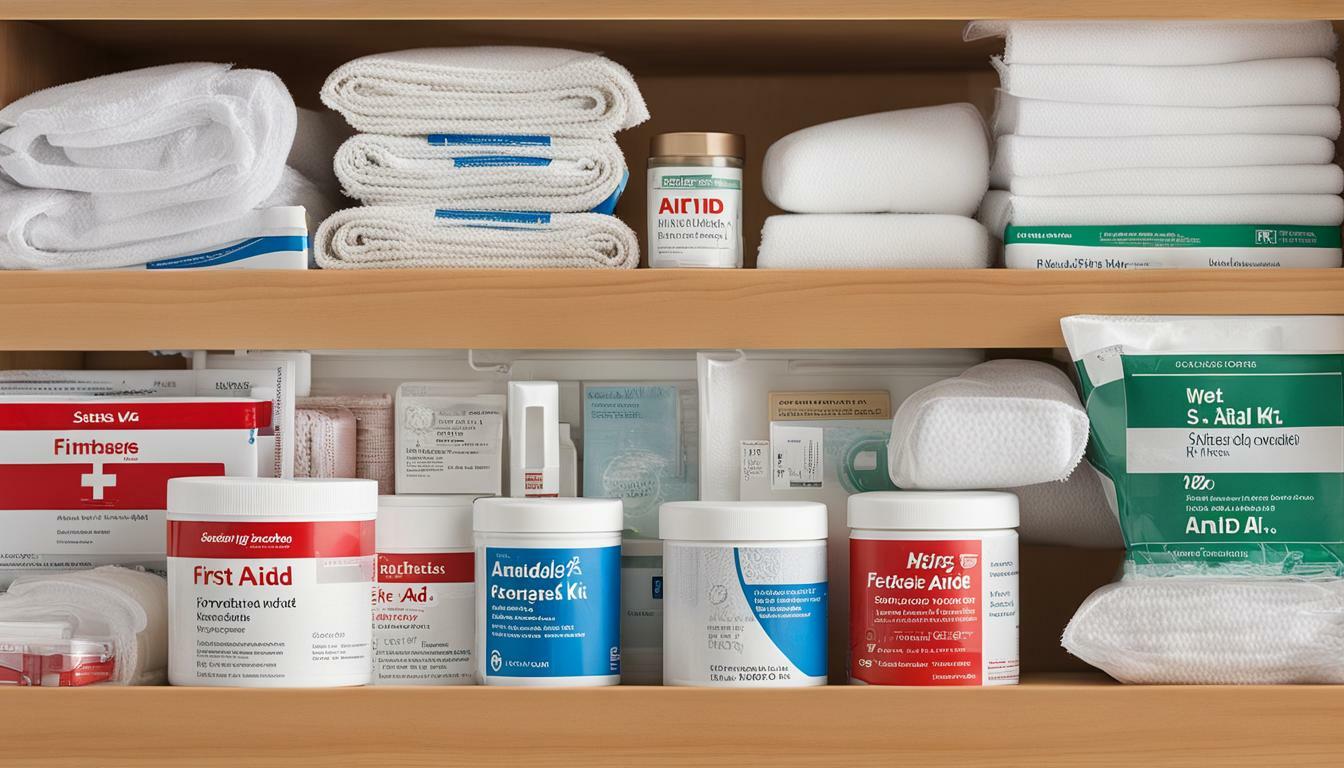
Remember to regularly check and update your first aid kits to ensure their effectiveness during emergencies.
Training and Education on First Aid Kit Usage
While having a well-stocked first aid kit is important, it is equally important to have the knowledge and skills to use it effectively in an emergency situation. First aid kit training and education are essential components of disaster preparedness and recovery planning.
First aid training can provide individuals with the confidence and ability to administer basic medical care until professional medical help arrives. It can also help individuals identify potential hazards and avoid further injury or harm.
There are various levels of first aid training available, ranging from basic courses to more advanced courses for healthcare professionals. Basic courses cover topics such as how to apply bandages, perform CPR, and deal with common injuries. Advanced courses cover more complex medical procedures such as administering oxygen therapy and using automated external defibrillators (AEDs).
It is important to note that while first aid training can provide individuals with the knowledge and skills to use a first aid kit, it is not a substitute for professional medical care.
In addition to first aid training, it is also important to provide education on the contents of a first aid kit and how to properly maintain and update it. This education should cover topics such as checking expiration dates, restocking supplies, and ensuring the kit is easily accessible in case of an emergency.
By providing first aid kit training and education, individuals can be better prepared to respond to emergency situations and contribute to overall disaster recovery efforts.
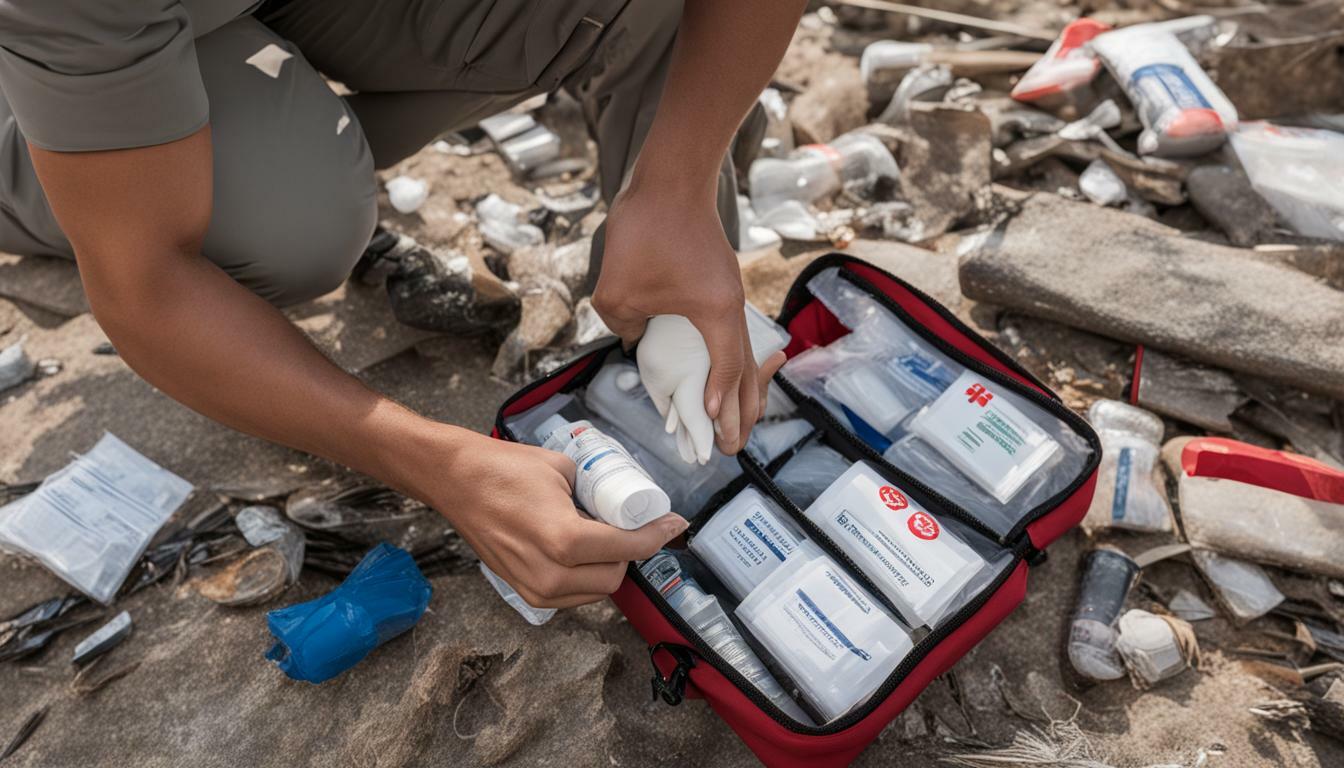
Incorporating First Aid Kits into Disaster Recovery Plans
First aid kits are a crucial component of disaster recovery planning. They play an essential role in ensuring the safety and well-being of individuals affected by disasters, particularly in the aftermath of an emergency.
When developing disaster recovery plans, it is important to consider the first aid needs of those affected. This includes ensuring that first aid kits are properly stocked, easily accessible, and strategically placed in areas where they are most needed.
Emergency responders rely on first aid kits to provide immediate medical assistance in emergencies. By having well-equipped first aid kits readily available, emergency response efforts can be more effective in reducing the number of injuries and potentially saving lives.
Furthermore, incorporating first aid kits into disaster recovery plans ensures that individuals have the necessary resources to tend to their own injuries and may reduce the demand for emergency medical services in the immediate aftermath of a disaster.
Overall, the inclusion of first aid kits in disaster recovery plans is crucial in promoting safety and emergency preparedness. By prioritizing the availability and maintenance of these kits, communities can take significant steps towards ensuring the safety and well-being of their members during times of crisis.

First Aid Kits as a Key Element of Workplace Safety
Every workplace has a responsibility to provide a safe environment for its employees. This includes having a well-stocked first aid kit readily available in case of emergencies. First aid kits are a key element of workplace safety, and here’s why:
Legal Requirements
According to the Health and Safety (First-Aid) Regulations 1981, employers must ensure that adequate and appropriate equipment, facilities, and personnel are available to provide first aid to employees if they are injured or become ill at work. This means that every workplace, regardless of size or industry, must have at least one first aid kit on the premises.
Employers must also ensure that the first aid kit is easily accessible and that employees know where to find it. It’s a good idea to keep the kit in a central location that is easily identifiable, such as a designated first aid station or a prominently marked cabinet.
Designated First Aiders
Employers must also appoint one or more designated first aiders to take charge of first aid arrangements in the workplace. These individuals must receive appropriate training to provide first aid in emergency situations and be knowledgeable about the contents of the first aid kit.
Having designated first aiders in the workplace can help ensure that injuries are treated promptly and effectively, potentially reducing the severity of the injury and facilitating a faster recovery.
Accessible and Properly Stocked First Aid Kits
First aid kits should be easily accessible and clearly labeled to ensure that employees can quickly locate them in case of an emergency. The contents of the kit should be regularly checked and restocked as needed.
The kit should contain basic items such as bandages, plasters, antiseptic wipes, and scissors. Depending on the nature of the workplace, additional items may be required, such as burn dressings or eye wash solutions.
Having a well-stocked first aid kit in the workplace helps ensure that employees receive prompt medical attention if they are injured or become ill. It can also help reduce the risk of further injury or complications and may even save lives in some situations.
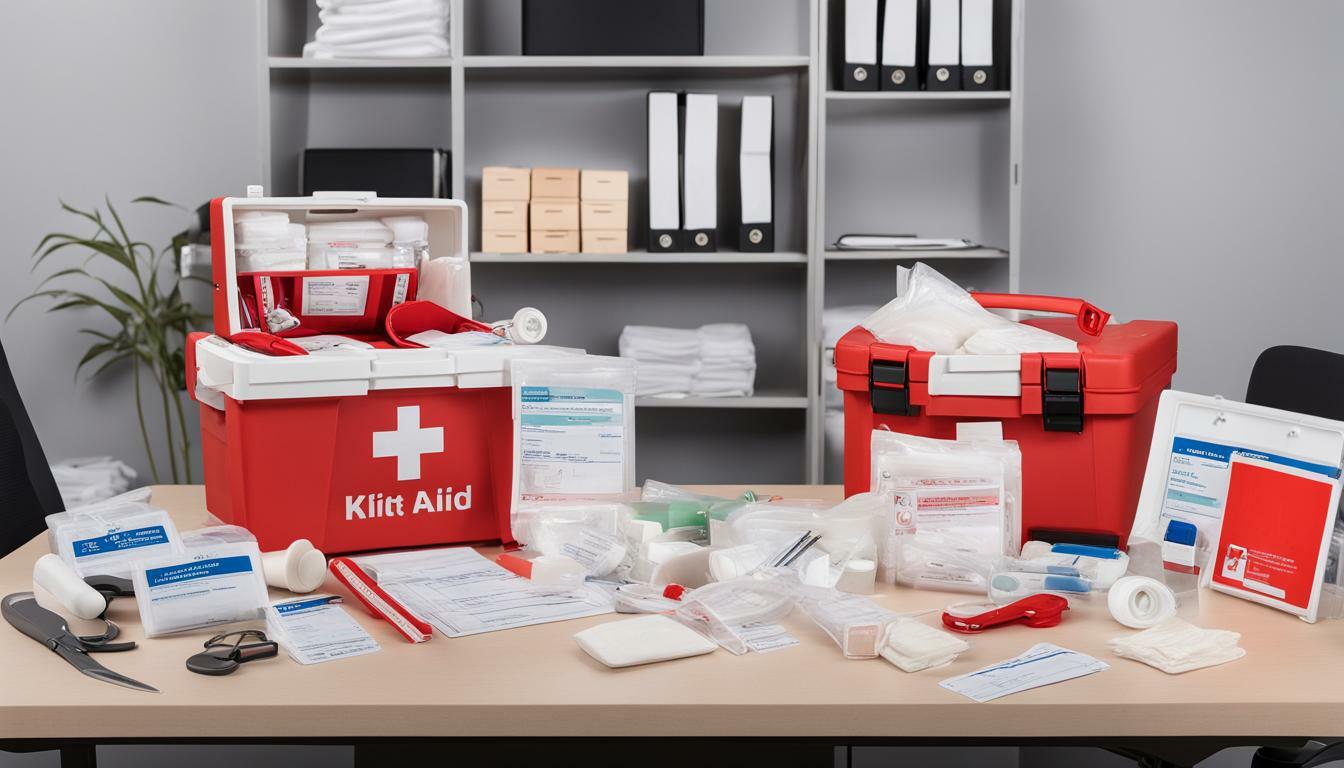
Overall, first aid kits are a critical component of workplace safety. Employers have a legal obligation to provide adequate first aid equipment and personnel, and employees have the right to expect a safe working environment. By ensuring that first aid kits are accessible, properly stocked, and overseen by designated first aiders, employers can help protect their employees and promote a culture of safety in the workplace.
The Role of First Aid Kits in Disaster Recovery Planning
Disasters can happen at any time, leaving people injured and in need of immediate medical attention. This is where the importance of first aid kits comes into play. In disaster recovery planning, first aid kits are a key element of ensuring the safety and well-being of individuals affected by a disaster.
Having a well-stocked first aid kit is crucial in ensuring that injuries can be treated immediately, potentially saving lives. First aid kits can also help minimise injuries, providing immediate medical assistance that can help prevent further injury or illness.
The Importance of Disaster Preparedness with First Aid Kits
Being prepared for disasters is essential. No one can predict when a disaster may happen, so it’s important to have a plan in place. First aid kits play a critical role in disaster preparedness. Every household and workplace should have a first aid kit readily available that is well-stocked and appropriately maintained.
First aid kits can help individuals deal with minor injuries and illnesses, but they can also help support more extensive medical attention when needed. By being prepared with a first aid kit, individuals can be confident that they can manage minor medical issues on their own, freeing up emergency services to deal with more critical issues.
Understanding the Essentials of a First Aid Kit
A well-stocked first aid kit should include all the essentials needed to deal with minor injuries and illnesses. Items such as bandages, antiseptics, gloves, and emergency contact information are essential components of a first aid kit. Other items such as medications and CPR masks may also be necessary depending on the situation.
It’s important to ensure that the first aid kit is tailored to the specific needs of the individual or workplace. For instance, workplaces that deal with hazardous materials must have a first aid kit that includes items to treat chemical burns and other related injuries.
The Benefits of Having a First Aid Kit in Emergencies
Having a first aid kit readily available in emergency situations can bring many benefits. Having the ability to treat minor injuries and illnesses promptly can help to prevent further problems and can potentially save lives. First aid kits can help to support emergency services by providing immediate medical assistance for minor issues that can be dealt with on-site. This can free up emergency services to deal with more critical issues.
Another benefit of having a well-stocked first aid kit is the ability to manage medical issues independently. In situations where emergency services are not readily available, having a first aid kit can provide individuals with the confidence and tools they need to manage medical issues themselves.
How First Aid Kits Contribute to Disaster Recovery Planning
In disaster recovery planning, first aid kits play a crucial role in ensuring the safety and well-being of individuals affected by a disaster. They support the efforts of emergency responders by providing immediate medical attention to those in need.
First aid kits also help to minimise injuries, potentially reducing the overall impact of the disaster. By providing individuals with the tools they need to manage minor injuries, the demand for emergency services can be reduced, allowing responders to focus on more critical issues.
Understanding the Contents of a First Aid Kit
A well-stocked first aid kit should contain all the essential items needed to treat minor injuries and illnesses. Items such as adhesive bandages, sterile dressings, and medications should be included. Other items such as CPR masks and gloves may also be necessary depending on the situation.
It’s important to ensure that the first aid kit is appropriately stocked and tailored to the needs of the individual or workplace. Regular checks should be carried out to ensure that the kit is up-to-date and that all items are within their expiry dates.
Guidelines for Maintaining and Updating First Aid Kits
Maintaining and updating first aid kits is essential to ensure that they remain effective when needed. It’s important to regularly check the expiry dates of all items and to replace any items that are no longer effective.
First aid kits should be easily accessible, preferably located in a central area, and should be appropriately labelled. It’s important to ensure that all individuals are aware of the location of the kit and are trained in how to use it effectively.
Training and Education on First Aid Kit Usage
Training and education are essential in ensuring that first aid kits are used effectively. It’s important to ensure that all individuals are aware of the contents of the first aid kit and are trained in how to use it effectively.
First aid training can help individuals develop the skills they need to manage a range of medical issues and can help to reduce the overall impact of a disaster. By providing individuals with the knowledge and skills they need, first aid kits can become an even more effective tool in disaster recovery planning.
Incorporating First Aid Kits into Disaster Recovery Plans
First aid kits should be considered a key element of overall disaster recovery plans. They should be integrated into emergency protocols and response strategies, ensuring that individuals know where to find the kit and are trained in how to use it effectively.
When developing emergency protocols and response strategies, it’s important to consider the first aid needs of individuals and workplaces. By doing so, first aid kits can become an essential component of overall disaster recovery planning.
Conclusion
First aid kits are an essential component of disaster recovery planning. Having a well-stocked first aid kit readily available can help individuals manage minor injuries and illnesses promptly, potentially saving lives and minimising the impact of a disaster. It’s important to ensure that first aid kits are appropriately maintained, tailored to the specific needs of the individual or workplace, and that all individuals are trained in how to use them effectively.
